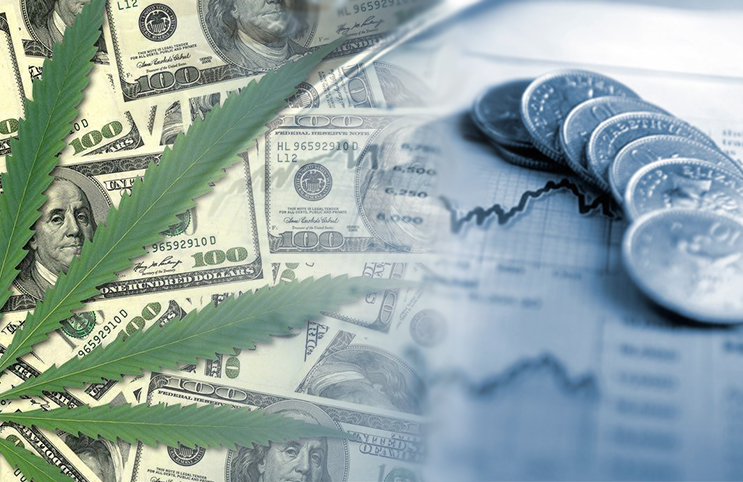No term is more feared among OTC investors and traders than “halted.” But “reverse split” seems to be right up there near the top of the list. However, reverse splits are misunderstood in a big way as it is not always a negative thing. In fact, sometimes a reverse split is followed by incredible growth and drastic increase in shareholder value. When used correctly by a CEO, a reverse split can be music to shareholders’ ears. But the key is, “when used correctly.”
OXIS CEO Tony Cataldo mentioned a reverse split in a recent interview conducted by Marijuana Stocks and ever since then we have been receiving several questions about what it means for the company. So, in this article, I will describe when investors should rally behind a reverse split and when they should run for the hills.
A Falling Share Price
First, let’s discuss running for the hills because more times than not a reverse split on the OTC is a terrible thing for shareholders. Companies trading on the OTC that have gone through a massive dilution most likely due to a poor financing deal with unfriendly investors and steep discounted convertibles are more likely to conduct a reverse split to help pull the price of the stock back to a respectable level. Sure the price resets back to pre-diluted levels but the damage has already been done. The dilution doesn’t just reverse itself. In fact, pulling the price back up by doing a reverse split in this case is the worst thing a company can do to its shareholders. Why? It opens the door up for further dilution and decreases shareholder value even more!
For example, let’s say I own 100,000 shares of Stock A trading at $0.01. Then, over the course of a few weeks, Stock A has a series of poorly structured convertible debt notes coming free to be sold into the market pushing the price down to $0.005. I still own my 100,000 shares but they are now worth half of my original investment. $1,000 is now worth $500. But, if Stock A progresses with its business plan and grows as a company, the share price could climb back to $0.01 once the convertible debt notes are gone bringing my investment back to its original value of $1,000.
But, let’s say Stock A decided to do a 2:1 reverse split. The share price would reset back to $0.01 but I would only have 50,000 shares instead of my original 100,000. Now in order for my investment to get back to its original value of $1,000, Stock A has to climb to $0.02.
Often times companies conduct reverse splits to pull their share price back up because they know another round of dilution and poorly structured convertible notes are coming to the market again and want to save their share price and avoid the negative stigma of sub-penny levels.
Reverse splits that are done to “save” a stock’s falling share price are immediate red flags for investors. In this case, you would rather retain your full share position because you have a much better chance of seeing the stock climb back to its original price if the company grows and reaches certain milestones. But a reverse split that comes without any other major news or financing for the company is essentially a death wish.
A Rising Share Price
Now let’s talk about why we all invest in OTC companies, up-listing to a major exchange. I have seen investors’ lives literally change overnight by investing in the right OTC company and that typically comes when an OTC company graduates to list on a major exchange. That is every OTC company’s goal and every investor’s dream. And guess what folks, more often than not, a reverse split is done to get there.
That’s right, many OTC companies that qualify for an uplisting to a major exchange like the NASDAQ do a reverse split in order to meet the minimum share price requirement of the exchange. The minimum share price requirement varies based on what other criteria the company meets but can be anywhere from $1.00 to $4.00.
There have been several instances where an OTC company has met every requirement for an uplisting except the minimum share price. In this case, a reverse split is music to investors’ ears as it means their once tiny little OTC company has grown into a main listed company and will now be able to raise real institutional money and could have its stock bought by every mutual fund, hedge fund, pension fund, and/or ETF around the world. This is a real game changer for a company and truly a life changing experience for early investors of the OTC company.
But the key is for the reverse split to be coupled with an uplisting or major institutional money raise. This is exactly what Mr. Cataldo of OXIS discussed during the interview when asked about receiving institutional interest. A reverse split on its own typically does not hold the newly increased share price and tends to trade lower in the weeks following the reverse. However, when coupled with an uplisting or major institutional raise, companies typically see their share price rise even further as every major institution, bank, fund, brokerage firm, and market maker around the world now has the ability to purchase the company’s stock. Liquidity increases 99.9% of the time and early investors enjoy a much healthier and efficient market than what was seen on the OTC.
Examples
One companies that recently underwent a reverse split coupled with an uplisting is InVivo Therapeutics Holding Corp. (NVIV). On March 25, 2015, the company announced a 1-for-4 reverse stock split coupled with an uplisting to the NASDAQ. The split went into effect April 8, 2015. The price of the stock at the time of this announcement was about $11 after you adjust for the 1-for-4 reverse split. Within less than 1 month, NVIV hit a high around $20 a share. I wonder what NVIV shareholders would say if you asked them how they felt about the reverse split. I’m sure a near 100% gain in less than a month might impact their responses.
What to Watch For
OXIS CEO Tony Cataldo has stated several times that he believes OXIS will uplist to a major exchange this year. He also was quoted saying he does plan on conducting a reverse split. But, he made it very clear that this will only be done if a major institutional raise and uplisting to a major exchange came with it. Based on what I have seen in the past, I would tell those interested in OXIS to keep a very close eye on the stock’s trading action and newswire for any additional clues. OXIS’ share price has risen significantly over the past several months so a reverse split in this case would not be because of dilution and would been seen as a very positive sign for the company as they would be moving forward with their plan of an uplisting.
MAPH Enterprises, LLC | (305) 414-0128 | 1501 Venera Ave, Coral Gables, FL 33146 | new@marijuanastocks.com










